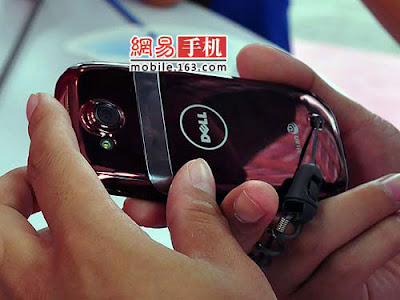
Motorola Inc., whose phone business has lost more than $4 billion since 2007, is devoting most of its investment in smart-phone software to Google Inc.'s Android, aiming for a larger share of the market for Web-surfing devices.
'We're doing an entire business based around this platform," Christy Wyatt, Motorola's vice president in charge of software platforms, said in an interview yesterday. 'If you talk about the mid- to high-tier portfolio, the only platform-level investment we're making at this point is in Android."
The company, which hasn't released a bestseller since its Razr handset five years ago, said it will unveil the Android devices on Sept. 10 and expects to have two phones ready for the holiday season. Its Android line may account for half of handset revenue next year, predicts Matt Thornton, an analyst at Avian Securities LLC in Boston.
Motorola is one of at least five companies expected to introduce Android-powered units in the next 12 months to tap consumer demand for smart phones. Sales of the Web- and e-mail-equipped devices climbed 27 percent worldwide in the second quarter as mobile-handset sales overall dropped 6.1 percent, according to Stamford, Connecticut-based Gartner Inc.
'Android will be the dominant platform for these guys over time," said Thornton, who has a 'neutral" rating on the stock. 'They're thinking about Android in not just the traditional sense of smart phones but at all price points."
'Not Five Guys and a Web site'
Thornton predicts Android handsets will climb from zero to 30 percent of devices Motorola sells in 2010, accounting for 51 percent of revenue. How quickly Android grows beyond that depends on its popularity with customers and the success of future versions of Microsoft Corp.'s Windows Mobile operating system, used in some Motorola phones, he said.
Motorola, based in the Chicago suburb of Schaumburg, is interested in the 7.0 version of Windows Mobile expected next year, Wyatt said. 'We never want to close off an option."
Motorola, which also makes walkie-talkies and TV set-top boxes, spent $1.6 billion on research and development in the first half of this year and generated one-third of revenue from mobile-phone sales. The company's commitment to Android means it probably spent disproportionately on the phone unit, said Thornton.
Wyatt declined to say how many employees are working on Android devices or how much the company is spending to do so.
'It's not five guys and a Web site," Wyatt said. 'The team is probably as significant an investment if not more so than the likes that I've had when I've been at Apple or Palm."
Challenging IPhone, BlackBerry
Motorola is developing smart phones that run on Google's open- source program to help it take on Apple Inc.'s iPhone, Research In Motion Ltd.'s BlackBerry and Palm Inc.'s Pre, and to reverse a 37 percent sales drop in the past two years. Google started Android in 2007 as part of an industry effort to devise free software for phones open to programmers who want to create games or other features for it.
Android should add more applications as new handset makers come on board including Motorola, said Andy Rubin, vice-president of mobile platforms at Mountain View, California-based Google.
'That gives a bigger market opportunity for third-party developers to build their applications," Rubin said in an interview last week.
He said Android doesn't have to match the number of applications available for the iPhone. Android's marketplace has more than 8,000 applications for download, up from 6,300 about three months ago.
Palm offers 41 applications to users of the Pre, RIM offers more than 2,000 for the BlackBerry. More than 65,000 are available for the iPhone. Spokespeople for both companies declined to comment. Natalie Kerris, a spokeswoman for Apple, didn't immediately respond to a request for comment.
The market for smart phones is still new, said Rubin.
'Market-share wise, we all have a long ways to go," he said.
Still, Motorola's bet on Android technology may give it an edge over RIM and Palm, which vet developers, as it challenges Apple for users, said Charlie Wolf, an analyst at Needham & Co. in New York.
'The name of the game is going to be applications going forward in terms of which smart phones sell best, and the two contenders are the iPhone and Android," Wolf said













































